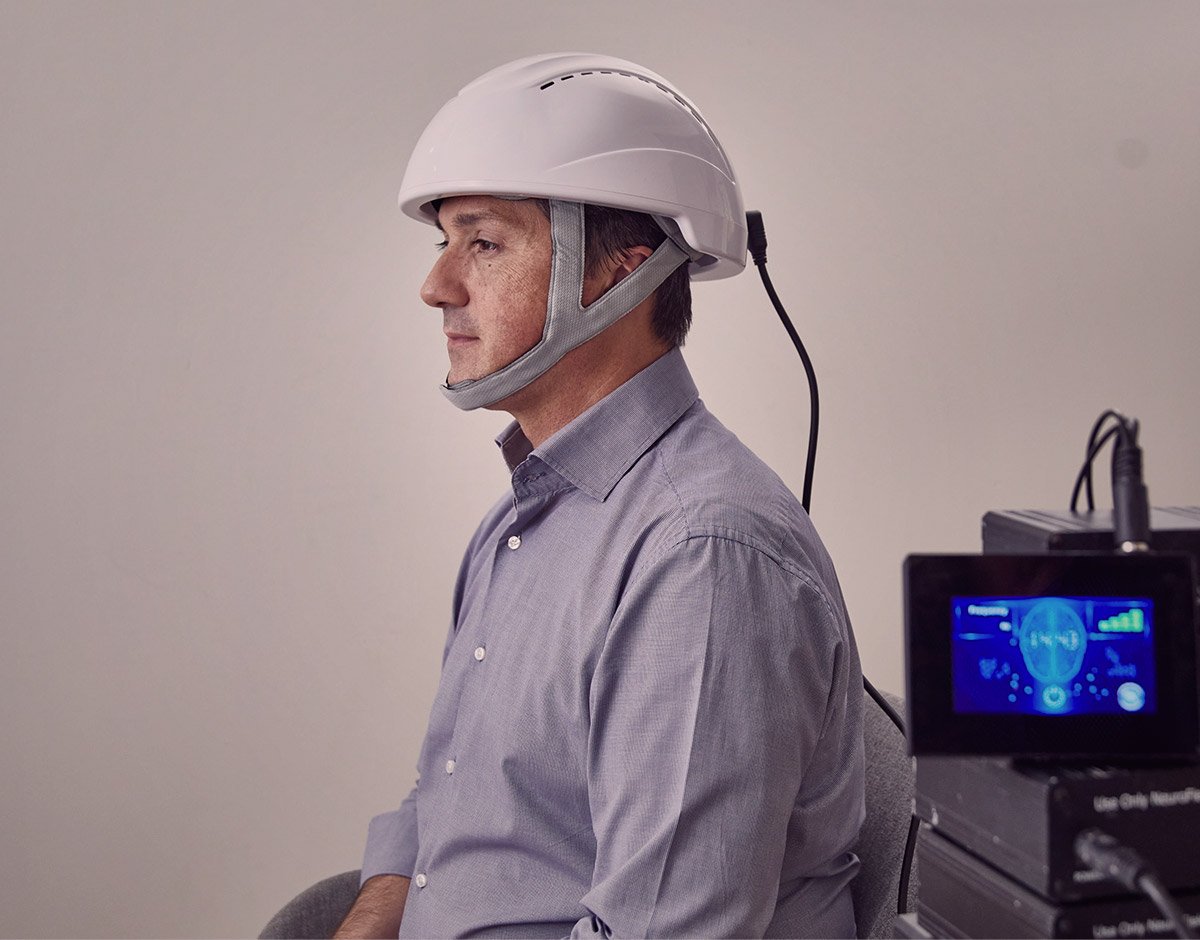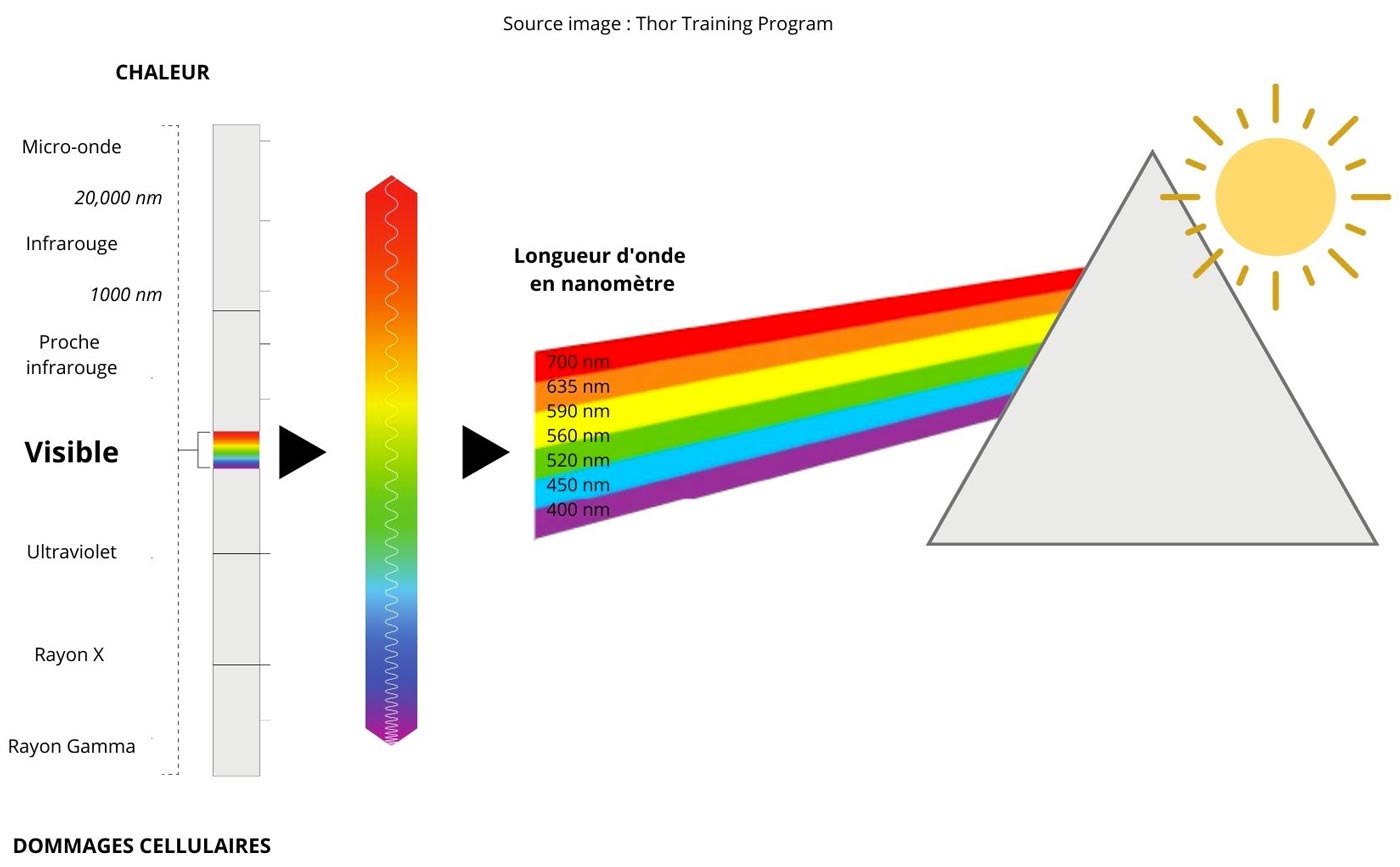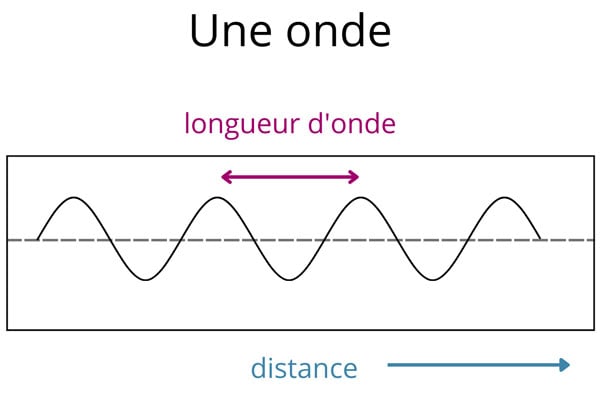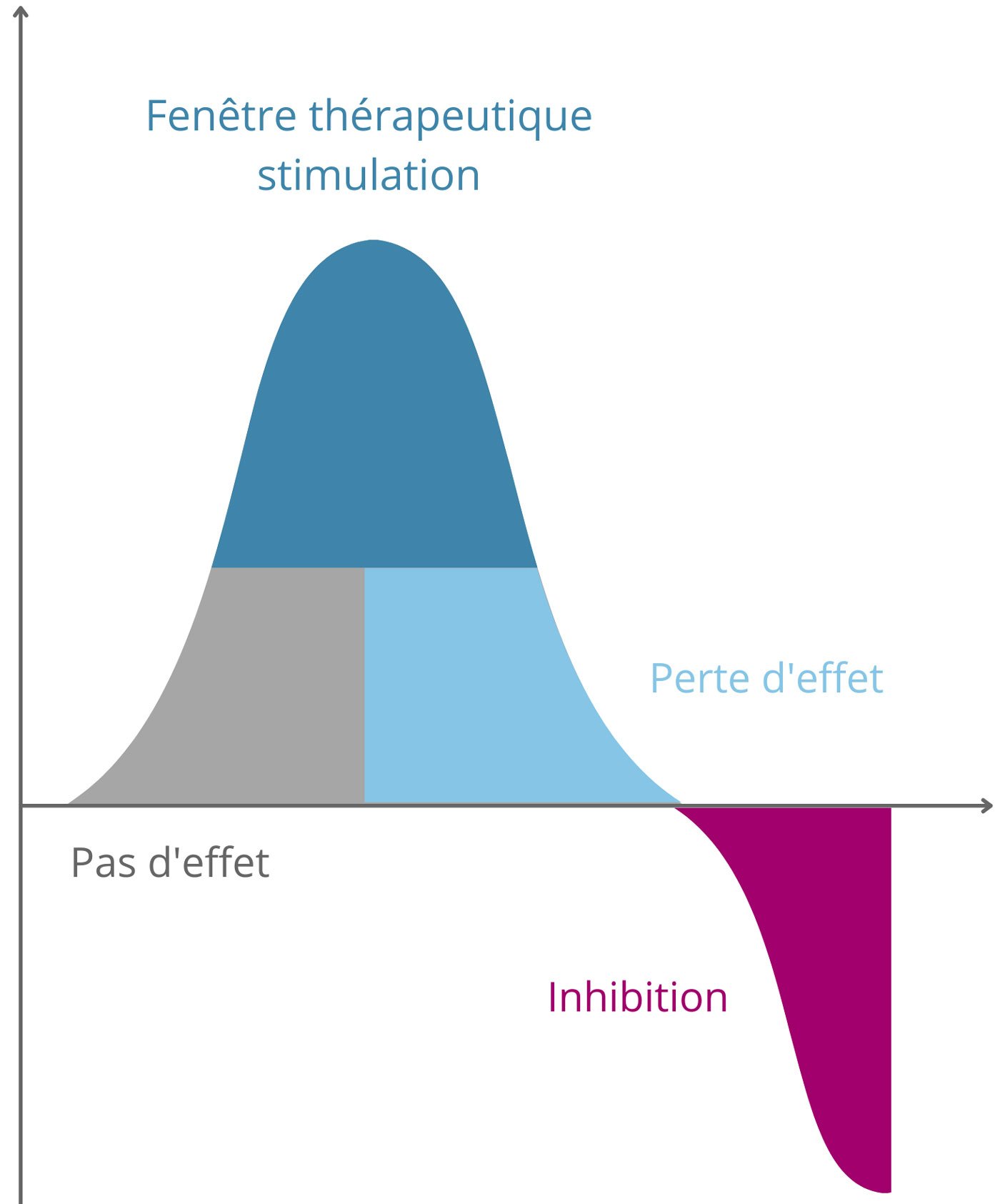
The devices we use are made of LEDs (not laser). They allow to apply a non-invasive, low intensity and non-thermal light. The light is generally in the visible red spectrum.
Photobiomodulation is not light therapy, they have nothing to do with it. The effect of photobiomodulation is similar to photosynthesis in plants. The light is absorbed by the cells and causes a biological cascade: it releases ATP in the cell inducing the neuroplasticity stage. This gives it multiple effects at different levels (anti inflammatory, anti oxidative, regenerative, neuroprotective…).
In recent years, it has been widely used in cosmetics (scar reduction, wrinkle reduction…). And it is finally put on the front of the stage for the improvement of cognitive and emotional functions as well as depression, PTSD, stroke, head trauma, dementia (Alzheimer’s, Parkinson’s …).
Published in reputable journals:
Now called photobiomodulation (PBM), this tool has gone by many names during its development:
Here is a summary of its history and development:
The history of PBM began in 1967 in Budapest when Professor Mester discovered laser biostimulation. In 1983, it was used to treat sports injuries and in 1998, NASA launched a study on wound healing in space using LED therapy.
In 2005, she used photobiomodulation for spinal cord regeneration, for which she was published in the journal Nature and Pain in 2006. In 2009, an article is dedicated to her in The Lancet stating that “PBM reduces pain immediately after treatment in acute neck pain and up to 22 weeks in patients with chronic neck pain”.
Since 2010, it is officially registered as a validated treatment for many conditions, especially in the field of pain and various injuries (osteoarthritis, tendonitis, chronic pain, cancer …).
Anything in the medical field is out of our competence.
PBM is based on 4 mechanisms and acts at the level of mitochondria.
If the cell does not absorb the light, there will never be an effect. PBM is absorbed by chromophores (light receptors) found in the mitochondrial proteins and cell membranes of our body.
The light absorbed by the cell causes a reaction within the cell: the potential of the mitochondrial membrane increases, the consumption of oxygen increases producing ATP.
This will modify the signaling molecules: those reactive to oxygen, nitrogen and calcium ions (Ca2+). Depending on the state of the said cells, they will either increase or decrease, in order to tend towards homeostasis (= regulatory process by which the organism maintains the different constants of the internal environment within normal values).
The pathway for photobiomodulation is through a transcription factor called NF-kβ. In our body, its role is to regulate genes and the production of cytokines from the cell nucleus. Cytokines are proteins that act as signals that allow cells to act remotely on other target cells to regulate their activity and function.
NF-kβ factor is known to play a pro-inflammatory role. PBM intervenes on this factor and transforms it into an anti-inflammatory factor that also allows tissue regeneration when working with the factor in Nfr-2.
The two coupled factors lead to the activation of enzymes, secretion of growth factors and other secondary messengers. In particular, Nfr-2 increases the cellular antioxidant activity of Superoxide Dismutase, Catalase, Glutathione Peroxidase, which decrease excessive reactive oxygen derivatives (DRO).
These cellular effects lead to an improvement in the speed and quality of tissue repair, a reduction in inflammation and a decrease in pain.
Note: DROs can attack:
→ At the cell level, this leads to cell death by apoptosis (the process of cell self-destruction) or necrosis.
→ At the tissue level, DROs can harden arteries causing cardiovascular problems but also deteriorate collagen (tissues become stiff).
Cells communicate a lot with each other. The above local responses result in distant effects on cells that have not absorbed the light. Secretions from cells that have absorbed the light affect neighboring cells (side effects) and can pass into the blood and lymphatic system. lymphatic system, which has effects at a distance from the treatment area. These effects have been demonstrated in laboratory and clinical trials.
There is a wide variety of waves, in the field of light is called optical spectrum. It includes the infrared, the visible spectrum, and the ultraviolet. The discipline studying their laws and behavior is called optics.

Spectrum of light
It is a physical quantity that characterizes a wave. It depends on the speed of propagation of the wave in the medium through which it passes without changing its frequency.

Each light wave has a different wavelength. Here is that of the white light:

Monochromatic light of high power (high irradiation) and a higher power density because the beam has a reduced size.

Monochromatic light with a lower power than the laser (low irradiation) and a lower power density because the beam is larger. It can emit any wavelength of light.

Like any tool or method, photobiomodulation also has its limits. Hence the importance of training in the use of these tools as we do. These rules below apply to LED devices and not to laser devices which present more contraindications and risks.
If the exposure to PBM is too short or of low intensity, it will have no effect. On the contrary, too much exposure can cause inhibitory effects, so care must be taken not to overuse photobiomodulation. In small doses over the long term it is more effective.

Image source: Thor Training Program
When the device is a class 3B or 4 laser it can damage the eyes. This is not the case with our devices. Our LED devices can be used to treat the eyes if the eyelids are closed.
It is preferable not to use the PBM on a pregnant woman’s belly to avoid disturbing the developing fetus.
In the case of inflammation, temporary symptoms may occur a few hours after PBM treatment while the inflammatory reaction subsides.
PBM should not be used if there is cancer on the tumor.
Regulations differ from country to country and even from state to state within the same country (such as the USA). Regulations also vary according to the profession. The use of lasers is regulated in Luxembourg and reserved for certain professions. We do not use lasers but LEDs.
There are regulations for manufacturers regarding safety and efficacy claims. Most countries have a formal application and approval process, such as the FDA in the US, the EC in Europe, the TGA in Australia, Health Canada, etc.
Talk to a specialist over the phone to determine together the solution that best suits your needs and budget.
Free call with no obligation.
Source of this page to reference : Thor Training program
We promise we will only send you quality content. You can unsubscribe at any time.
We are not doctors or psychiatrists. Therefore, we do not diagnose, we do not prescribe medication, we do not cure illnesses and we are not an emergency center. We often help people reduce or even stop their medication in agreement with the health professional who follows you. Please note that you do not need a prescription or a diagnosis to make an appointment at Neurofeedback Luxembourg.
We promise we will only send you quality content. You can unsubscribe at any time.
We promise we will only send you quality content. You can unsubscribe at any time.